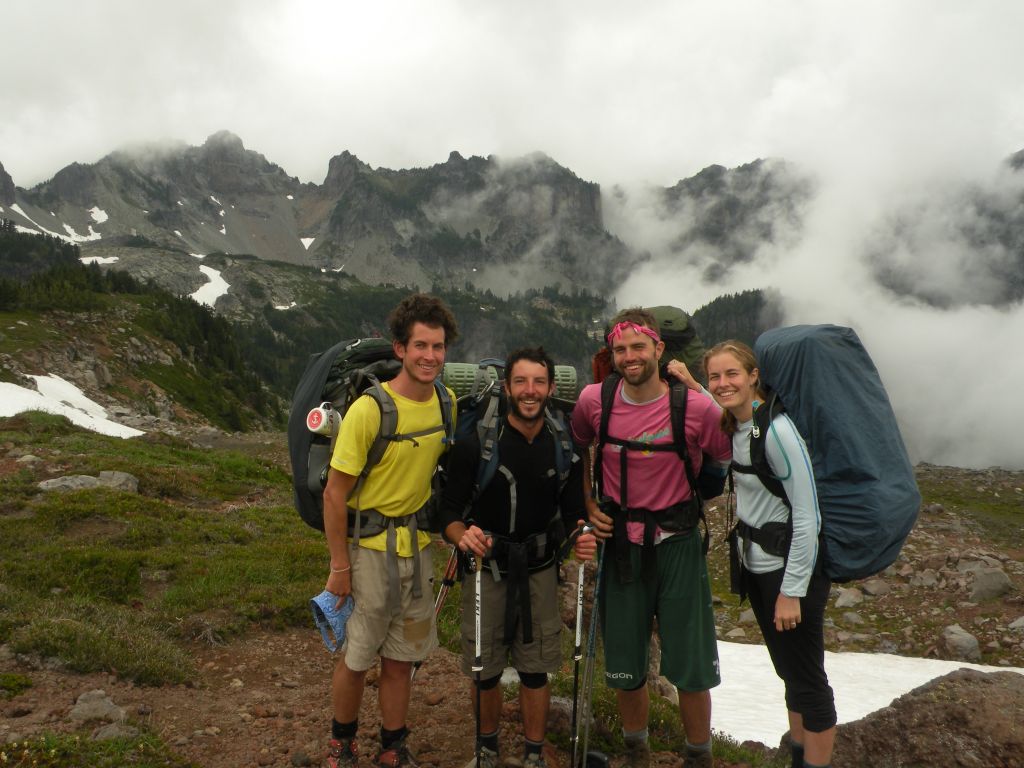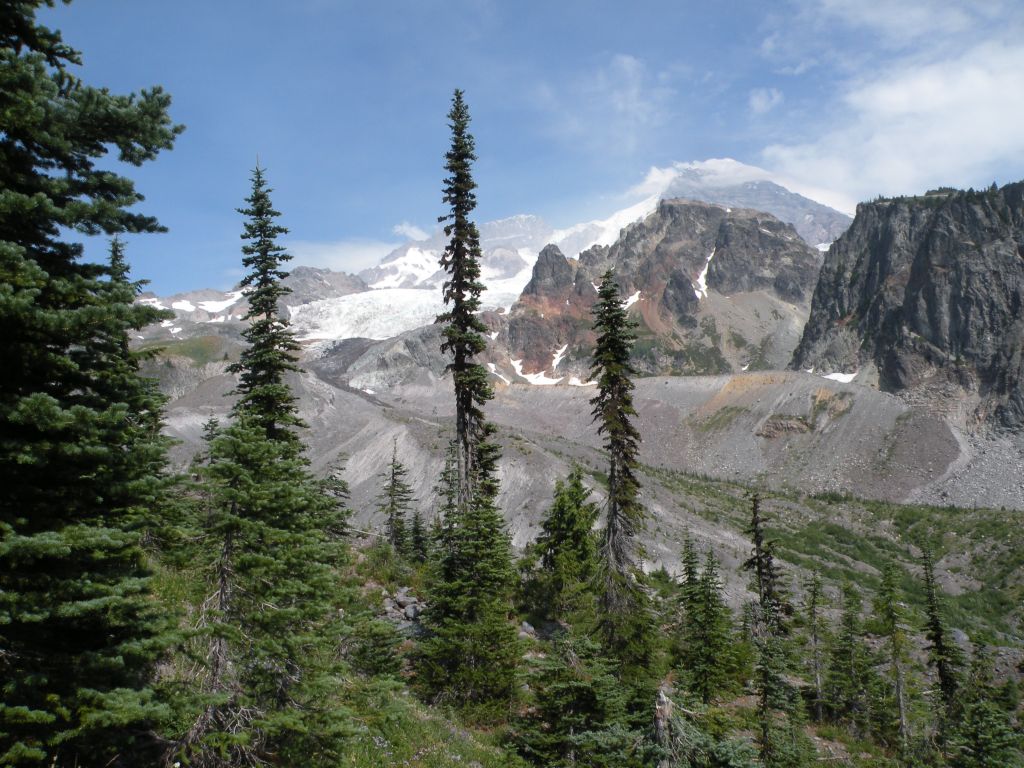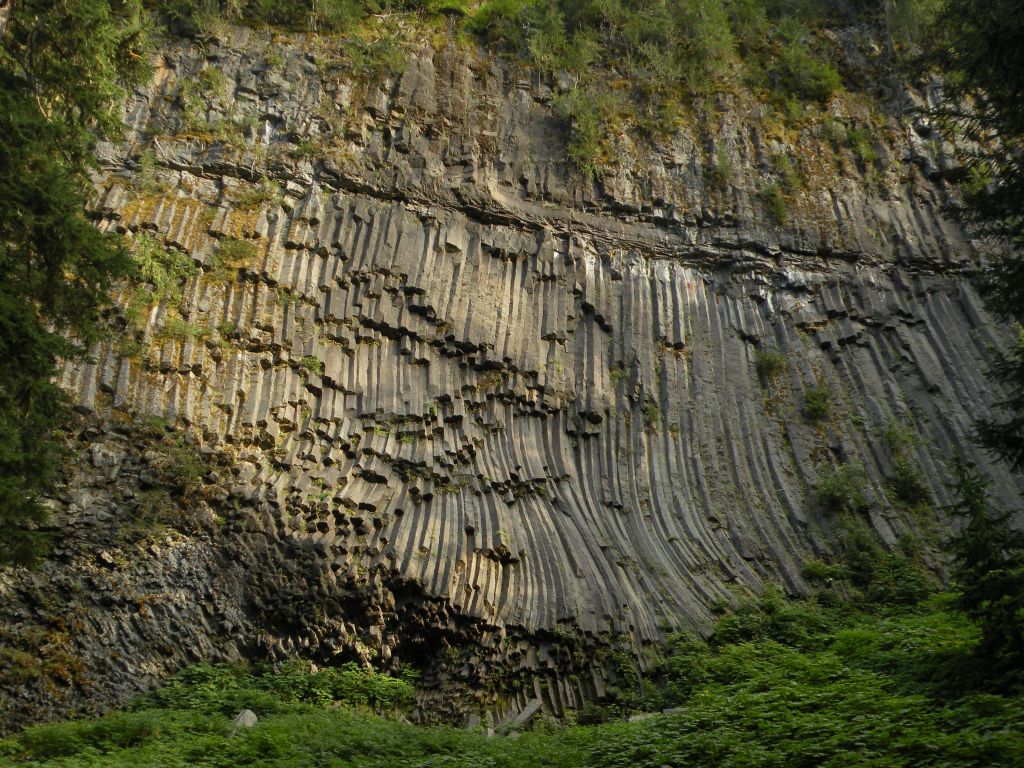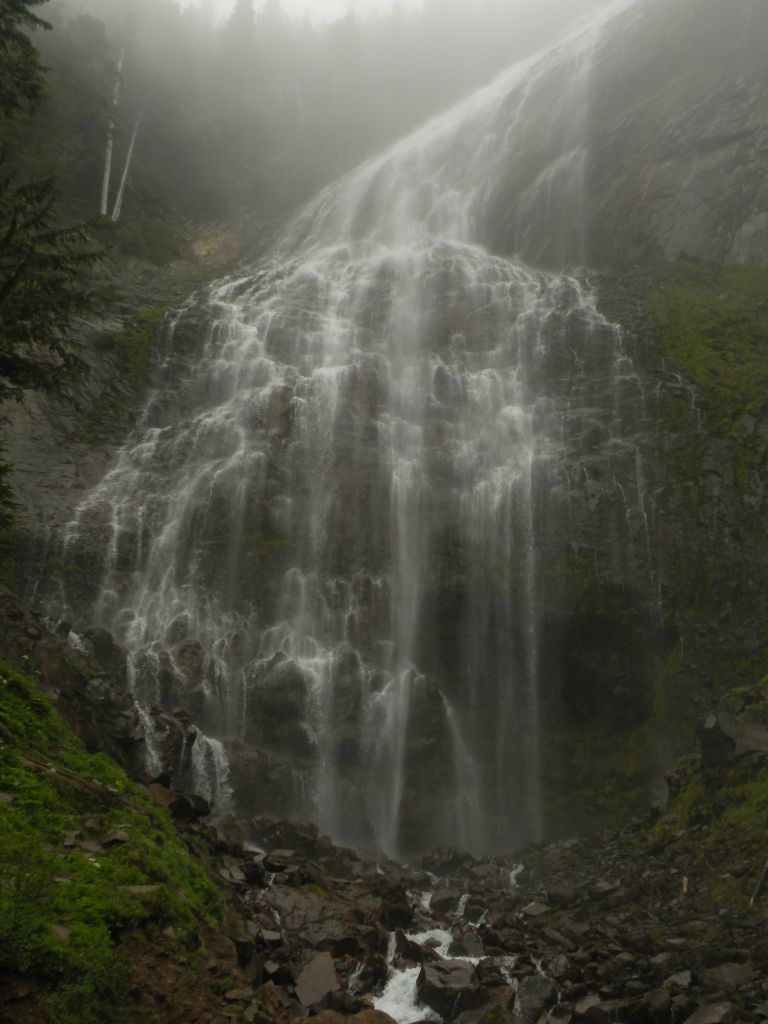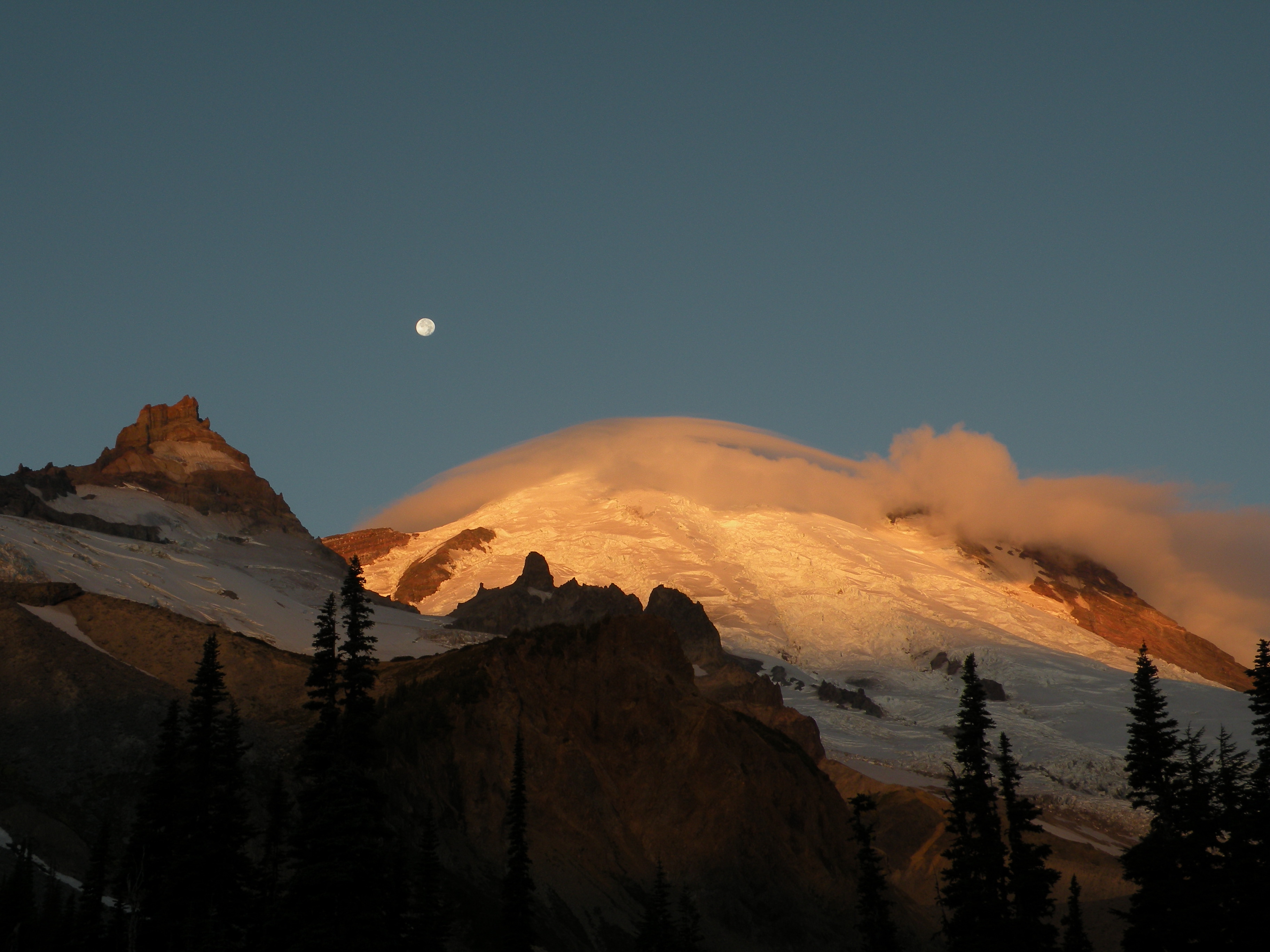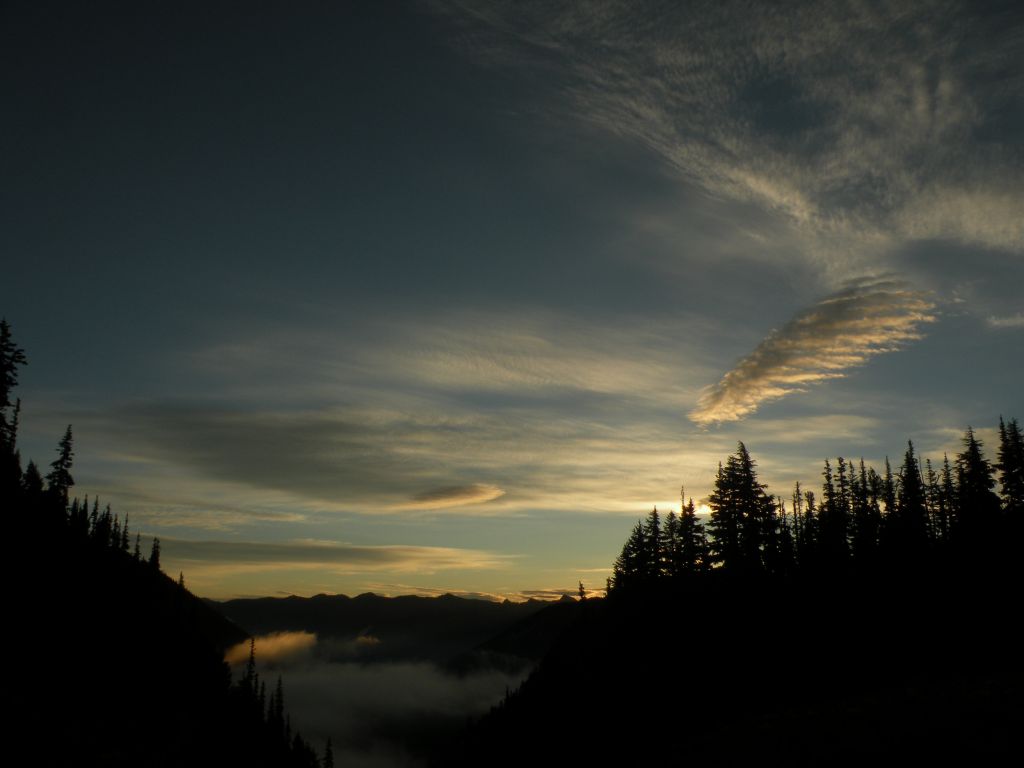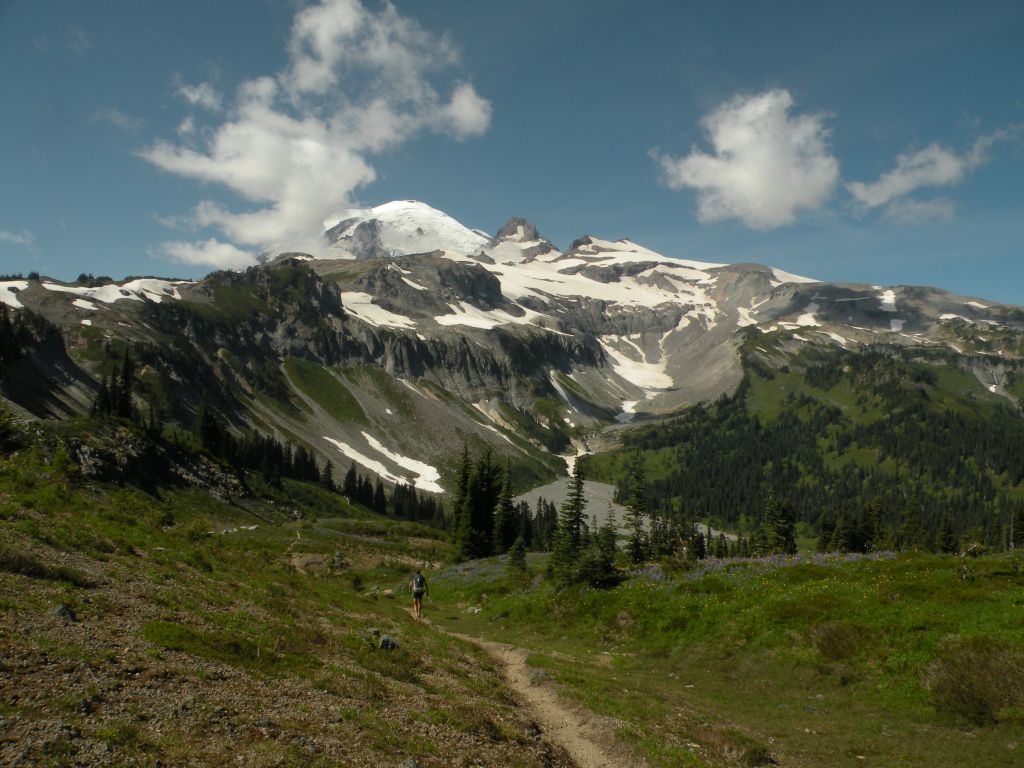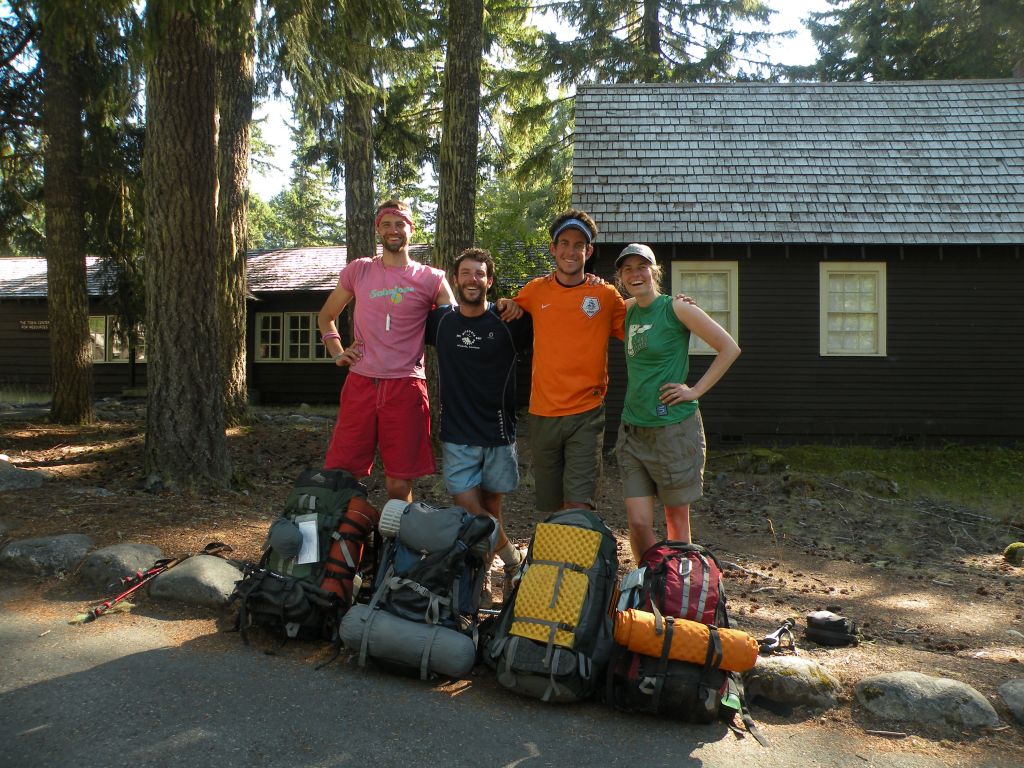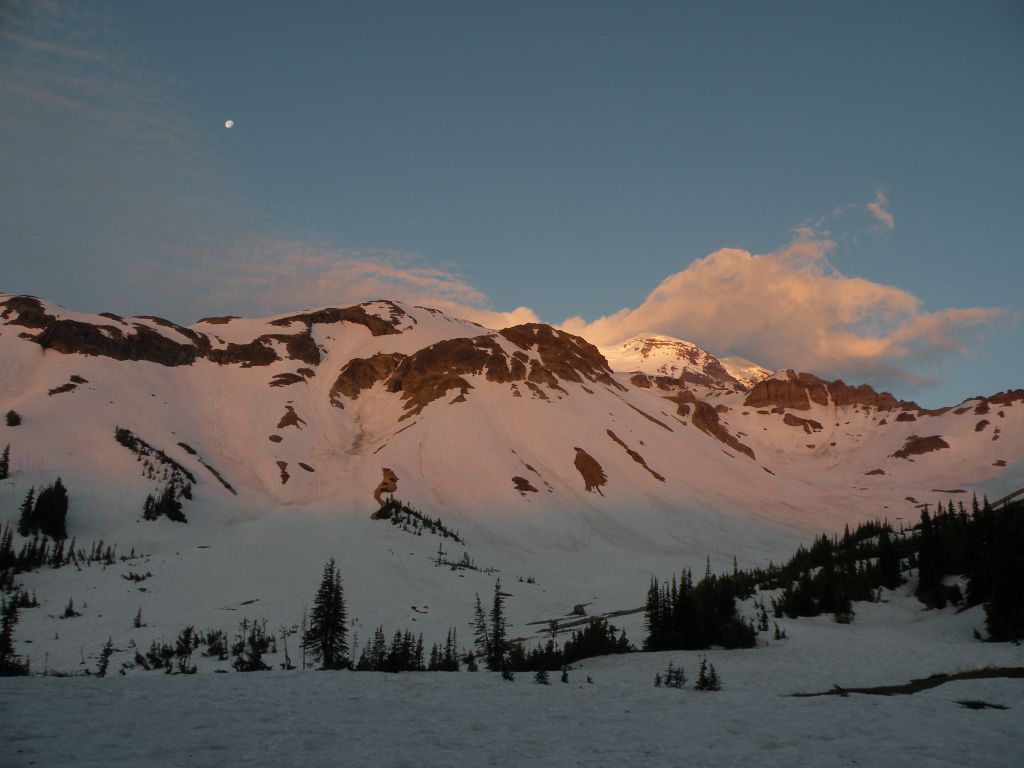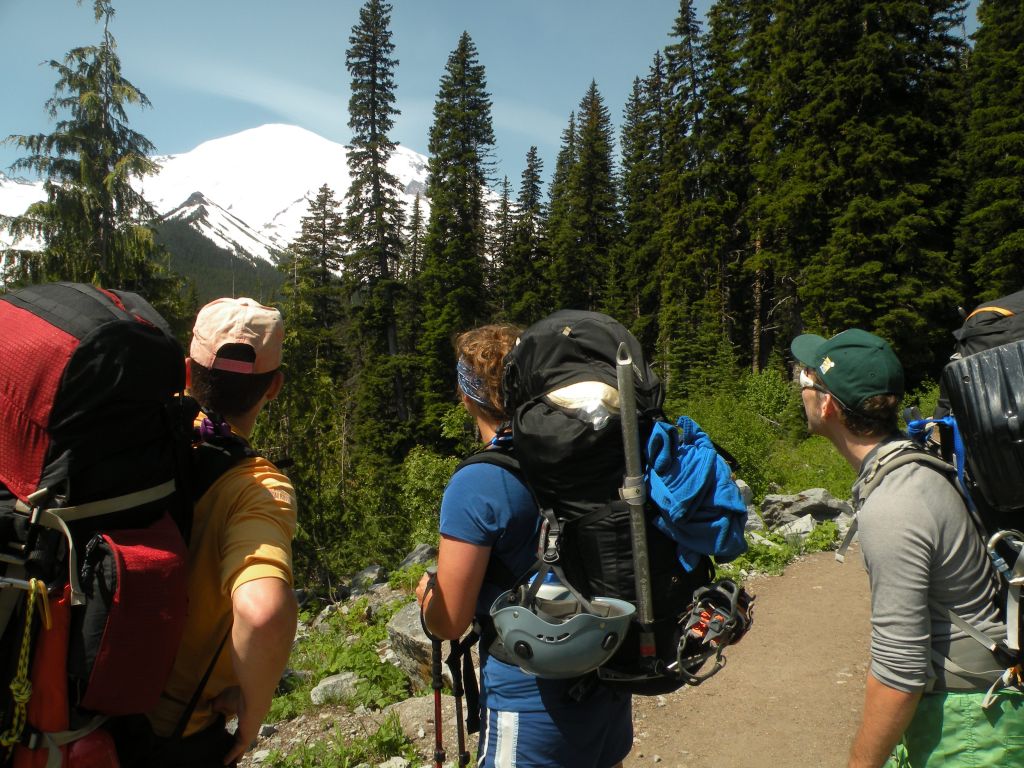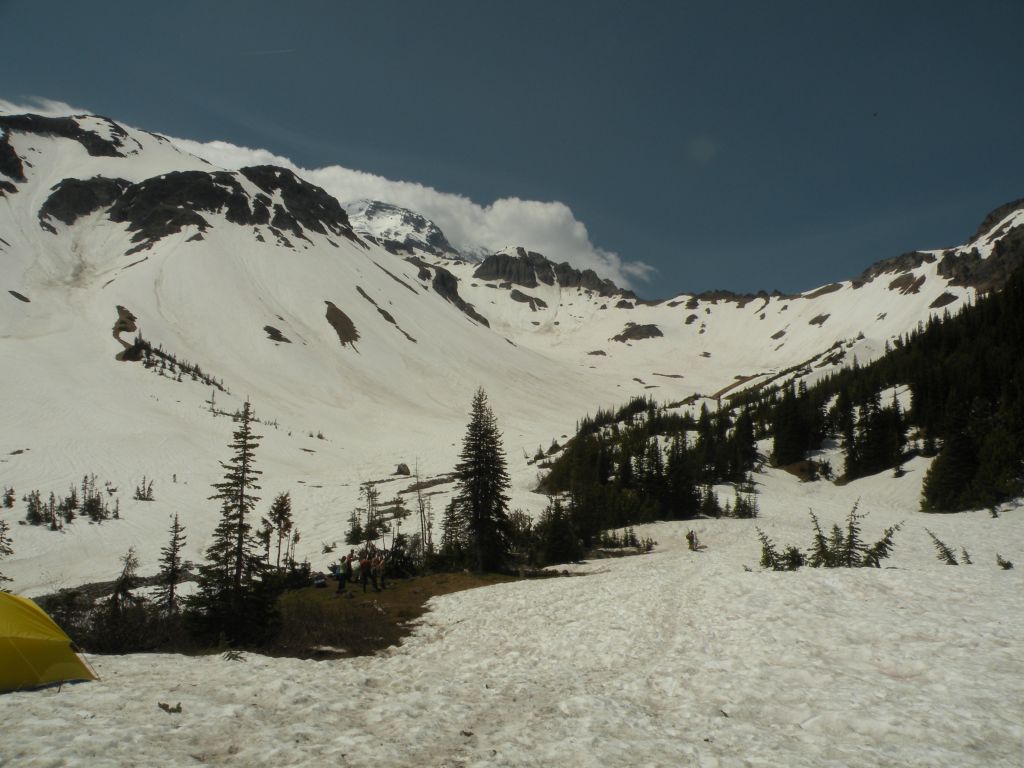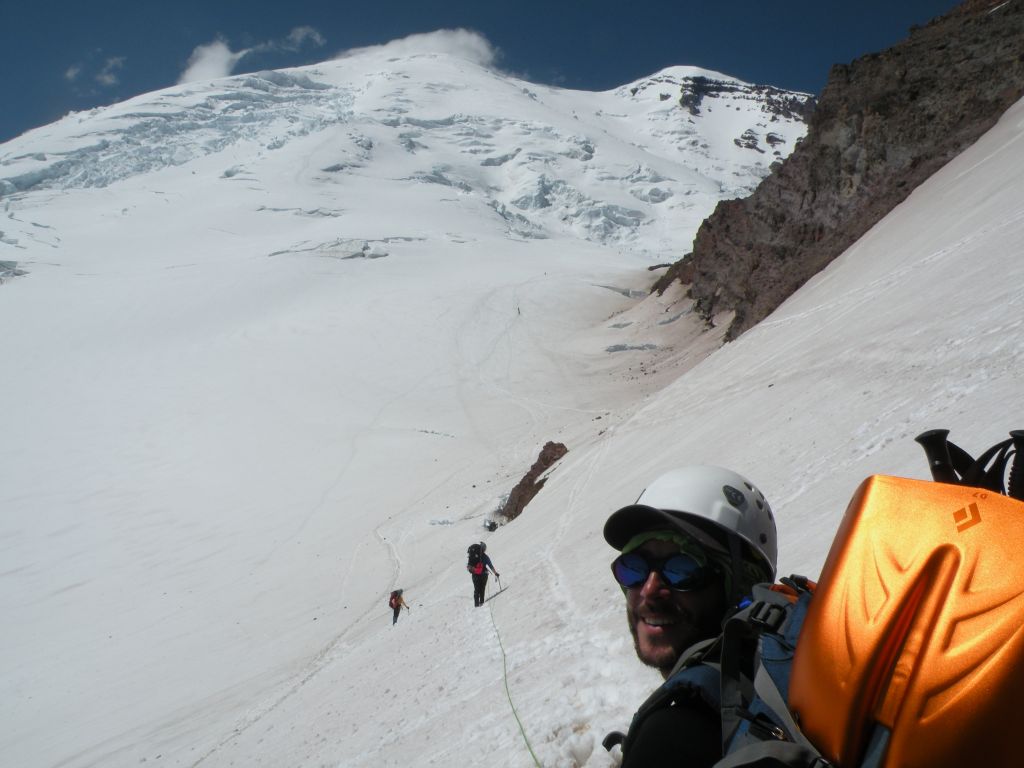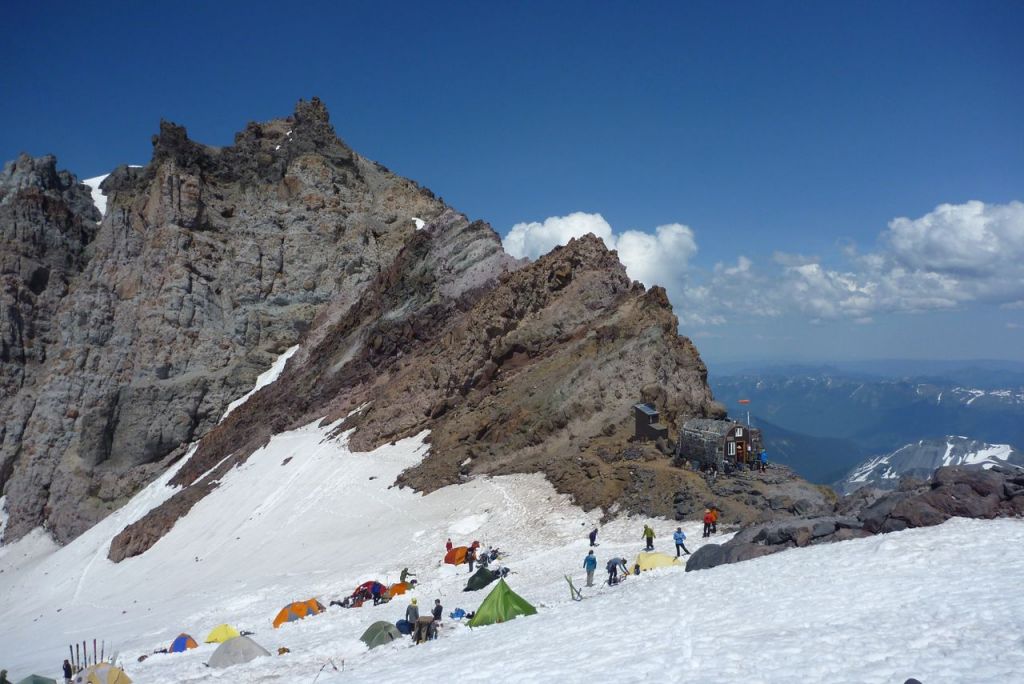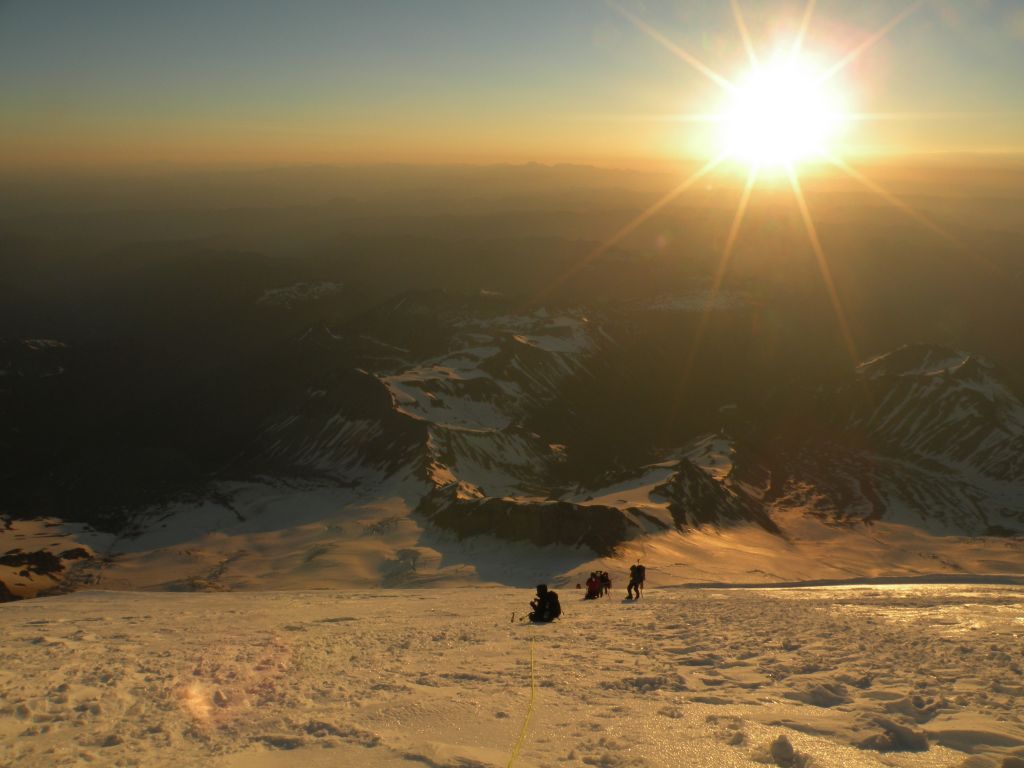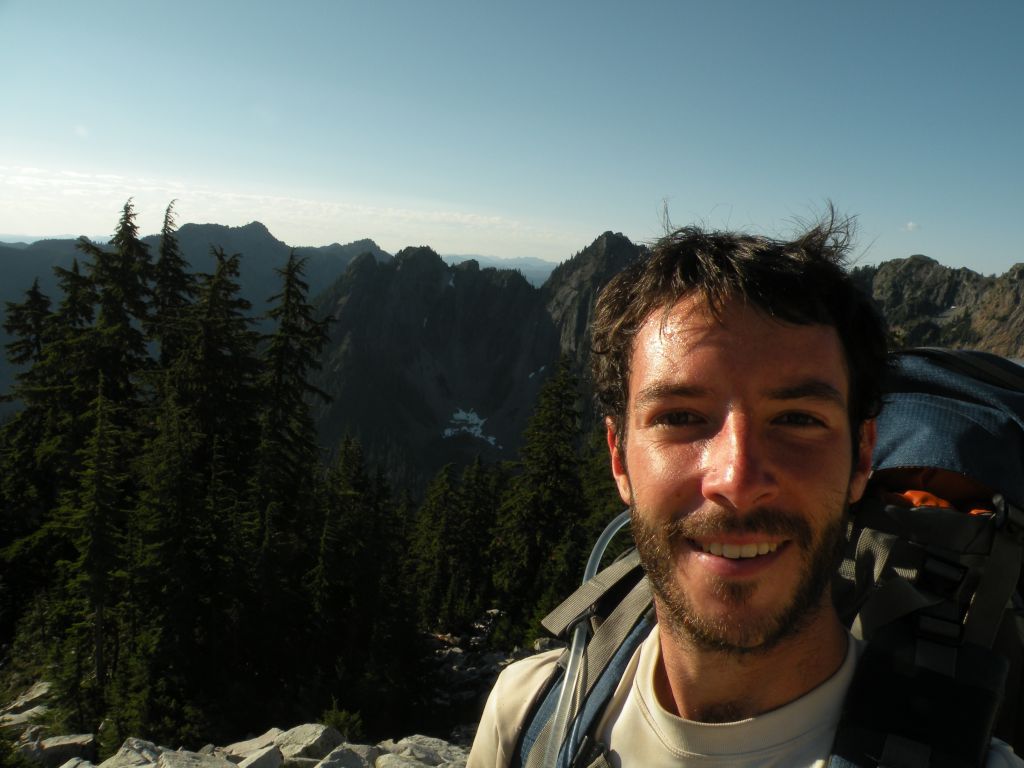Hiking Wonderland
I spent the last ten days in the woods of Washington state hiking the Wonderland Trail. It is a 93-mile loop around Mt. Rainier, and is considered one of the most spectacular hikes in the world. It was certainly one of the most beautiful places I’ve been, but what was most special about the trip was the mental evolution it allowed. The combination of the natural beauty and the length of the trip allowed me to break through the crust to deep layers of mental clarity.
The trail itself is relatively difficult, including about 22,000 ft of elevation gain (and loss) over the length of the loop. Ten days is a moderate to easy length for the trip. We saw some people doing it in five, and others taking twelve or thirteen. Ultra-marathoners even do the whole thing in twenty-four hours. That would be a different kind of experience, though, and ten days gave us ample time to enjoy the gifts of the mountain.
After some last-minute injuries, our group ended up being four strong. I knew all three of my travel companions before the trip, but had never taken on such an adventure with any of them. This added some uncertainty going into the trip, but worked out better than I could have hoped. The group dynamic was wonderful, a real joy. The team was positive and supportive, which made the camping easy and gave a lot of space for play and reflection.
I started the trip not knowing what to expect. I had never been on a backpacking trip longer than five days before, and I had never done any hiking in the wilderness surrounding Mt. Rainier. I summited the mountain a couple months ago, but that was very much about going up and down quickly, not taking time to circle around. I approached the trip with an open mind; I was very excited in an abstract way, but without concrete expectations.
We started the trail at Longmire, a populated put-in at the southern edge of the mountain. Preparations had gone smoothly and we had two food caches waiting for us at patrol stations along the way. This meant we would never have to carry more than three days’ food at a time – a luxury for long backpacking trips.
Our schedule gave us two short days right off the bat to get warmed up to the trail, which was a great way to loosen up our legs. These first days felt like typical day hikes. We were still close to society, both physically and mentally. The vistas were gorgeous, but I got antsy being socked in by the forest for long stretches in between. The uphills were tough, so we took our time and our legs adjusted. We did a good amount of lounging about on the ridges and around rivers, knowing that our longer days ahead would not allow for it.
Things felt good. We were getting used to being in a group together. We made jokes and started making references to jokes we had already made, slowly building experience and camaraderie. By day three or four we comfortable as a unit and realized that each person could hold their own in the woods.
Around day five things started to coalesce and we began to get deep into the flow of the trail. Each day’s walk became more enjoyable than the last. Physically, our legs had become strong and loose. Time began to feel more fluid. We would occasionally look at clocks to get a sense of how we were doing, but the day was no longer broken up into fifteen or thirty minute intervals. There was morning, midday, afternoon, evening, night. Each had its own joys and unique feelings associated with it. Every minute was filled with the beauty of the national park.
The landscapes we walked through began to take on a whole different character. The ridges brought unparalleled beauty. The views were almost too vast to comprehend, too picturesque to feel real. They were literally breathtaking. As we approached a pass connecting the northeastern corner of the mountain to the eastern side, we were exposed to an expansive view to the south. Mt. Adams and Mt. Hood stood clear on the horizon, our path crept for miles ahead through snow patches, rocky ridges, and lush valleys of wildflowers. The air was pulled from my lungs in awe.
Forests no longer made me antsy, rather just the opposite. The long sheltered uphills and downhills laid the best foundation for introspection. They gave me a chance to process the unbelievable vistas from the ridges and to empty my mind of built-up clutter. The trees were gorgeous: thick, coarse, full of life. We chatted a lot, talked about movies, solved riddles, but there was plenty of opportunity for silence and deep breaths. The forest trails were soft on the legs from pine needles, and they became a place for active meditation.
On day 7 we camped at White River on the north side of the mountain. This was the same spot my previous group had started for the summit a couple months earlier, and it is a popular car camping area. Seeing so many day hikers and cars was overwhelming. We had very much closed ourselves off from the outside world in the past week, only interacting with each other, the mountain, and a few other groups of hikers. It was only by seeing these hints of society that I realized how simple our hike had been. Each day we would walk, eat, and sleep. Occasionally we would play a game of cards or sing songs. We had no access to the news, the media, text messages or traffic. Only with the pressure of these everyday stimuli lifted did I realize that their weight had been enormous. It doesn’t seem like much to fit one little worry in our minds at a time, but the collective burden of all these small things we think about everyday is enormous.
Losing these distractions had been so easy. They vanished without my realizing that they were gone, and in their place my mind expanded into calm and clarity. Stress was nonexistent. All this clutter in my routine back in society was not making my life better. Rather, it was making it harder to live life consciously, hardly to appreciate small joys, and harder to be honest and playful in my interactions.
One of the benefits of traveling with a group that I hadn’t experienced on my solo hikes was this access to playfulness. With so little stress and such simplicity in our day to day lives, playfulness and joy moved closer to to surface of our interactions. We spent lunches laughing to the point of tears, something I rarely approach in my city life. Our conversations could be serious and playful and the same time; sarcasm and irony melted away. Our time was full of joy, and our relationships grew much stronger because of it.
We covered a lot of mileage on the last couple days of our trip, and were treated to some of the best views we’d had. I was glad to have a chance to process some of the thoughts that had come up during our brief encounter with the outside world. I resolved to take some concrete steps to living closer to simplicity at home, such as incorporating yoga and meditation into my daily routine and giving away some of the physical clutter in my apartment. I also realized that creating more access to joy and play will likely be a theme throughout my life, and that a trip like this does wonders for reinvigorating those ideals.
By the last day of the trip we were surrounded by day hikers and cars for large periods at a time, but we had come to terms with our reintegration into society. It was terrific to see that so many families and children were enjoying the beauty of the National Park.
We stopped at a diner for some greasy dinner on the way home, and realized that we hadn’t stepped indoors, sat in chairs, showered, or been in a car for ten days straight. No wonder our bodies and minds felt so good.

